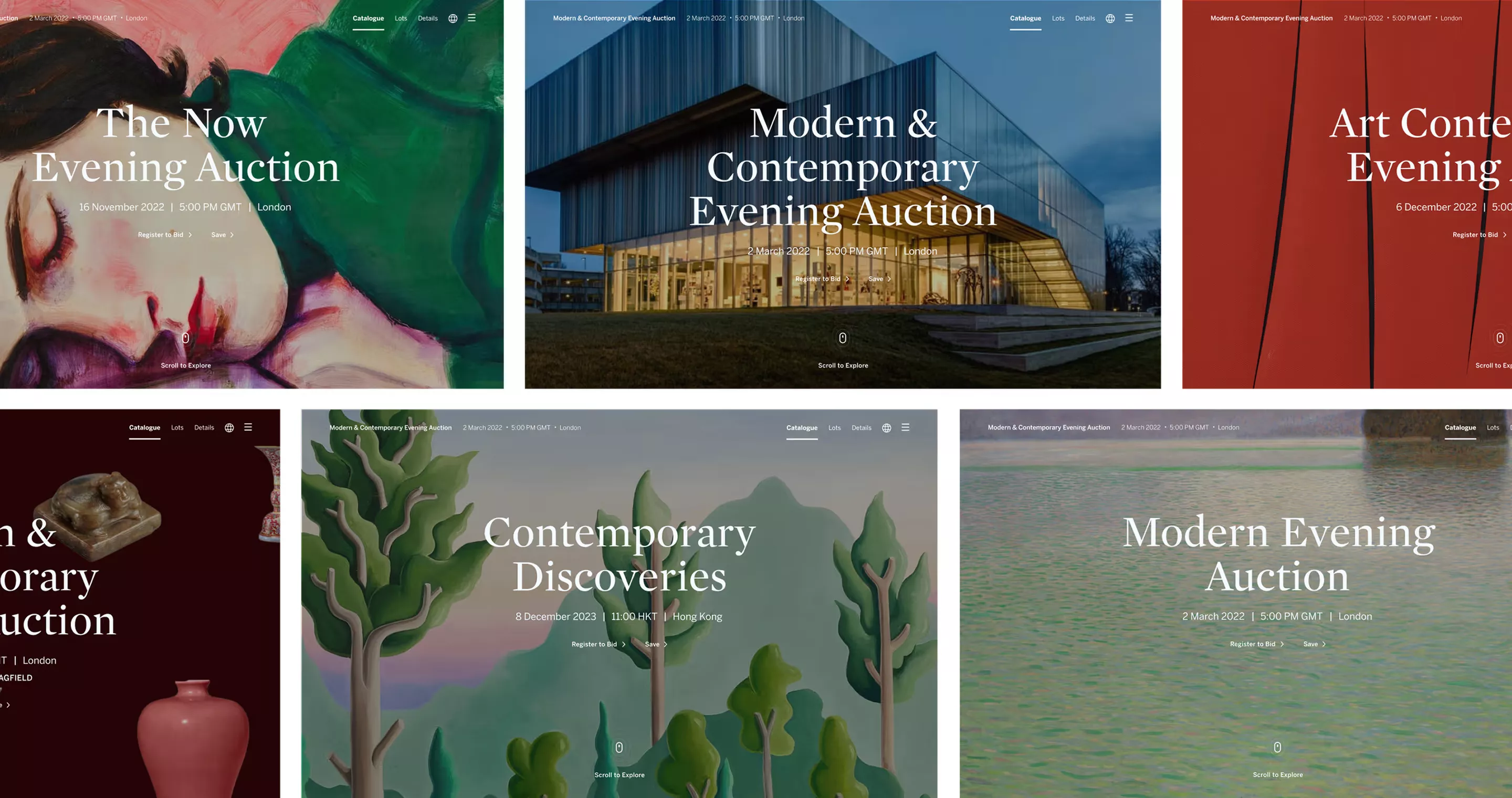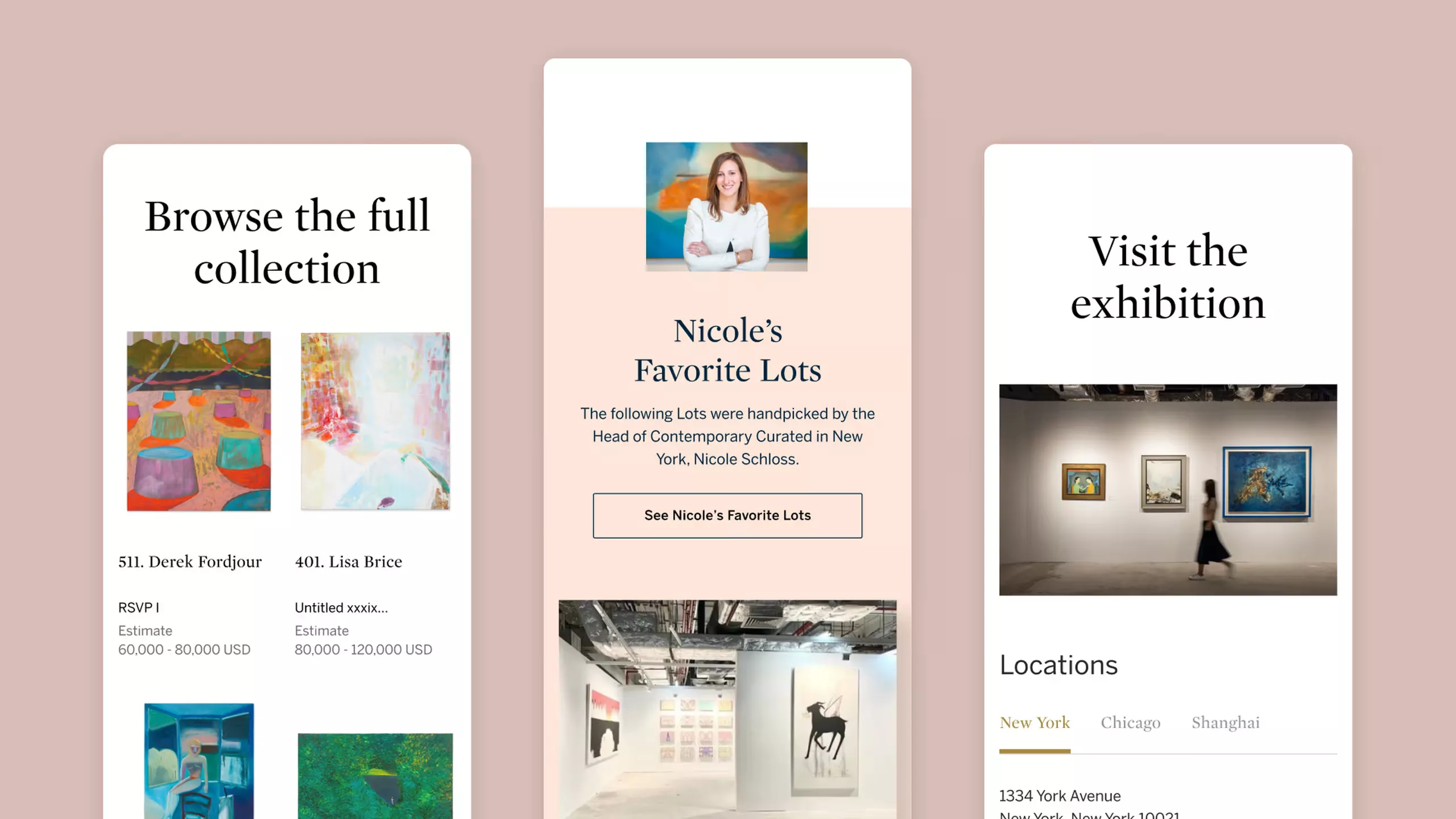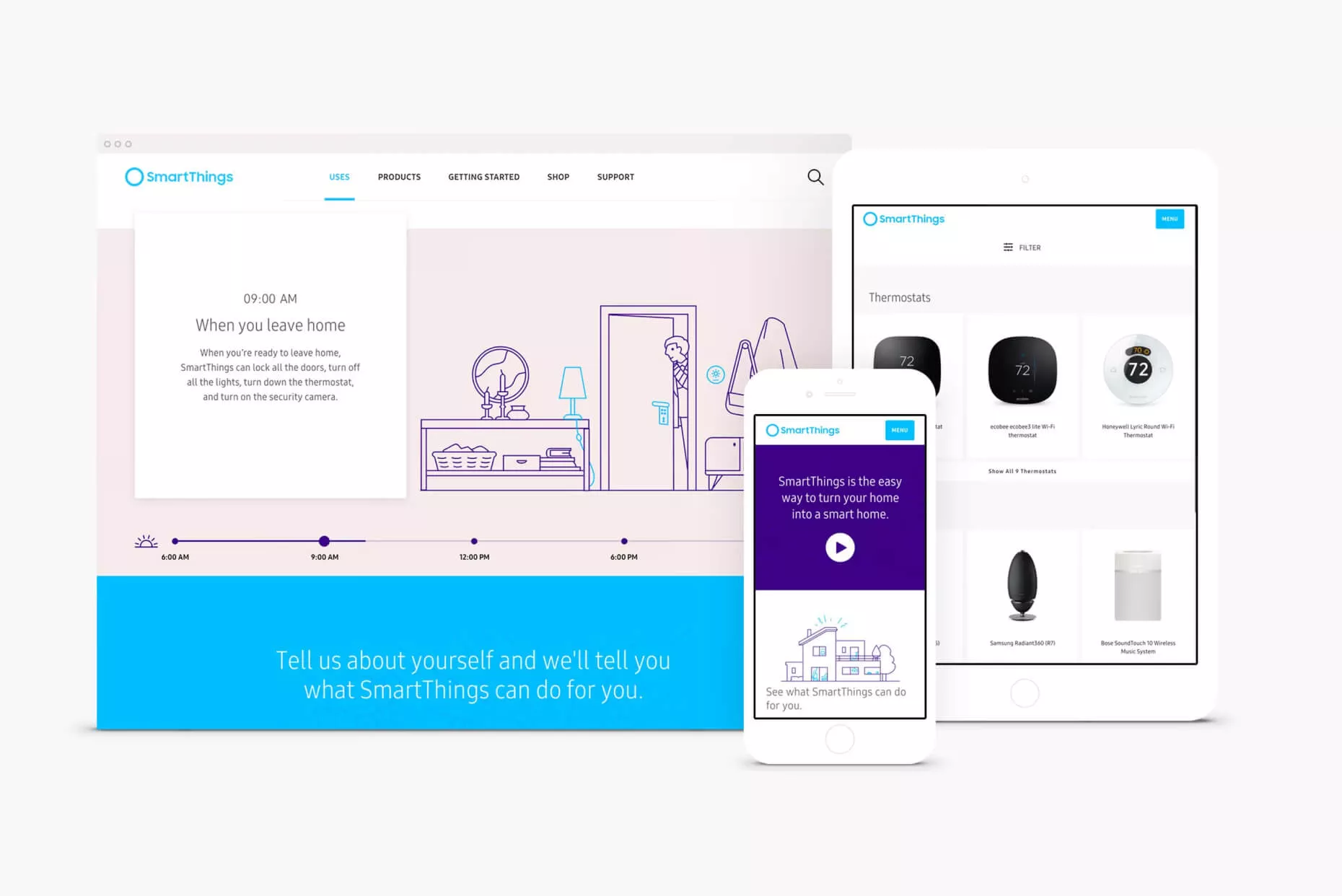From a physical art catalog to immersive digital storytelling
SOTHEBY’S
An e-commerce website replicating Sotheby’s iconic physical art catalog of fine and decorative art, jewellery, and collectibles, online.
SERVICES
RESEARCH
DIGITAL STRATEGY
DESIGN
DEVELOPMENT
PROJECT INFO
Challenge
Sotheby’s took its auctions online as part of its ongoing digital transformation. They built an e-commerce website to handle the bidding and sales process and asked us to replicate their iconic collections catalog online to complement this.
Solution
‘A gallery of stories’ offers visitors a premium, digital catalog, an immersive story about each ‘lot’, bringing a feeling of tangibility that is otherwise lost whilst not being in the presence of its physical alternative.
Outcome
Our impact has been strong, with 50% of the team adopting the new catalog and a 10% increase in clientele and stakeholder engagement.

Established in 1744, Sotheby’s is one of the largest brokers of fine and decorative art, jewellery, and collectables. In its time, Sotheby’s has facilitated the sale of Marie Antoinette’s jewels, Biggie’s crown, and Monet’s nymphéas.
To support the sale of every anticipated auction, Sotheby’s produces an auction catalog. The catalog is a treasured collectible in and of itself: usually found alongside art books on coffee tables. Its margins are full of thoughtful notes, and corners are folded down to refer back to time and time again.
After hundreds of years of in-person auction experiences, the pandemic brought all of that to a halt – meaning auctions had to progress online. Selling the pieces virtually was straightforward; however, replicating the rich, immersive format of their auction catalog was more challenging.
We were invited to design and build a premium, digital version of this catalog, putting art and its stories at the forefront of the concept through an immersive experience.
Thinking digital, not catalog first
To better understand the catalog and the business it serves, we spoke to general managers, marketers, and curators at Sotheby’s. Through user testing, we learned more about the benefits and drawbacks of the current digital catalog design.
We identified two key challenges to address during the project. First, the number of lots in a collection varies from as few as five to as many as five hundred. The design and digital experience had to be built to accommodate as many or as few lots within each chapter.
Second, the catalog experience had to be built within a specific set of technical requirements. As the digital auction process was running on a traditional e-commerce platform, the lots and immersive catalogue needed to be linked so that users could bid and purchase their pieces.
The guiding principles
We paired our research with competitor analysis and a content inventory to develop five design principles. We used these principles to build a digital-first catalog, rather than attempting to recreate a digital version of the physical catalog.
- Property Informed Design – Helping distinguish between catalogs and each chapter, we used the auction or lot subject matter to dictate the surrounding content and style.
- Shortening the Digital Gap – Elevating the experience through tangibility and a sense of physicality to the digital catalog’s design.
- Layering Information – Grouping content and disclosing it progressively to make long reads digestible for users and to create an experience that deepens, not disrupts.
- Giving Users Control – Enabling users to play an active, not passive, role in their browsing experience, enabling them to scan or dive deep as needed.
- Flexing Sotheby’s Expertise – Surfacing Sotheby’s knowledge and expertise earlier in the user journey to add value and drive credibility.

A gallery of stories
From our own research and resulting design principles, we created the concept ‘A Gallery of Stories’. An experience that mimicked a stroll through a gallery, with each scroll offering a window into a theme and its related lots.
Playing with the horizontal and vertical scroll, the ambition was to enable the user to step in and out of each window, with the option to dive deeper or step back.
OUTCOMES
Internal team adopting the new catalog
50%
Increase in online engagement by clientele and key stakeholders
10%
This project was led by Your Majesty, Amsterdam’s award-winning creative agency that became part of Infinum in 2025. The original case study can be read here.








